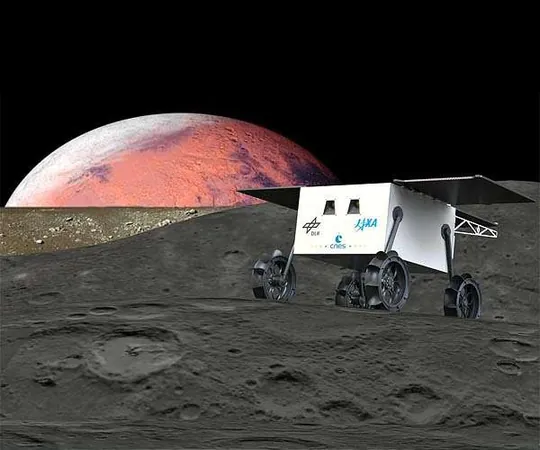
The Sky’s the Limit: How AI is Revolutionizing Space Exploration
2025-07-20
Author: Li
AI Takes to the Cosmos
What if artificial intelligence could redefine our journey into the depths of space? The answer is unfolding before our eyes as AI technology guides spacecraft, manages satellites, and helps scientists explore distant planets like never before. With both space agencies and private firms investing heavily, the future of AI in space promises unprecedented exploration and discovery.
How AI is Reshaping Space Missions
AI and machine learning are transforming modern space exploration, allowing spacecraft and rovers to operate with increasing autonomy. A prime example is NASA's Perseverance Rover, which uses AI to navigate Mars and make real-time decisions without waiting for instructions from Earth. This capability is crucial when missions face long communication delays.
According to ESA, their Mars Express is also leveraging AI to manage data loss and workload, significantly improving mission efficiency. Meanwhile, observatories like the James Webb and Hubble generate vast amounts of data daily, and AI is crucial for analyzing this influx, helping scientists discover everything from exoplanets to galaxy formations more rapidly than ever.
AI Manages Risks and Enhances Findings
AI not only accelerates data analysis but also safeguards missions. It predicts equipment failures, optimizes satellite trajectories, and manages emergency protocols during solar flare events. For instance, partnerships between NASA and tech giants like Google have resulted in AI models that have uncovered new exoplanets simply by analyzing existing data.
The SETI Institute employs AI to sift through deep space radio signals, searching for signs of extraterrestrial life. As more AI-integrated missions are launched, these intelligent systems are becoming essential to how we study the universe.
Innovative Missions Shaping the Future
Billions are being poured into AI-driven projects designed to push the boundaries of what’s possible in space exploration. Here are some exciting upcoming missions:
1. **ESA’s Martian Moons eXploration (MMX)**: This mission aims to land on Mars' moon Phobos and return samples to Earth using onboard AI for navigation and adaptability, showcasing how machines can operate independently.
2. **Private Sector Innovations**: Companies like SpaceX are enhancing their AI systems—Starlink satellites already utilize onboard intelligence for collision avoidance. Future deep-space missions with Starship will further push the envelope in autonomous operations.
3. **NASA’s Artemis Program**: Starting in 2028, autonomous robots will construct infrastructure on the Moon, demonstrating real-time decision-making capabilities and collaborative teamwork.
4. **Europa Clipper**: Slated to launch in 2024, this mission to Jupiter’s moon will employ AI to process critical data, allowing for immediate response to new findings. The spacecraft will analyze data on board, conserving bandwidth for transmission and enabling rapid discovery.
5. **Starship's Deep-Space Tests**: SpaceX plans to employ AI for critical navigational tasks during its ambitious Starship missions, which aims for Mars and beyond. This technology will allow for real-time troubleshooting and system optimization.
A Future Driven by AI
As we prepare for a new wave of missions starting in 2025, the role of AI in expanding our understanding of the cosmos cannot be overstated. With each autonomous system deployed, we are one step closer to creating a robust framework for exploration that relies less on human intervention. The future of space exploration is bright, and AI will be at the helm, guiding us deeper into the universe than ever imagined.


 Brasil (PT)
Brasil (PT)
 Canada (EN)
Canada (EN)
 Chile (ES)
Chile (ES)
 Česko (CS)
Česko (CS)
 대한민국 (KO)
대한민국 (KO)
 España (ES)
España (ES)
 France (FR)
France (FR)
 Hong Kong (EN)
Hong Kong (EN)
 Italia (IT)
Italia (IT)
 日本 (JA)
日本 (JA)
 Magyarország (HU)
Magyarország (HU)
 Norge (NO)
Norge (NO)
 Polska (PL)
Polska (PL)
 Schweiz (DE)
Schweiz (DE)
 Singapore (EN)
Singapore (EN)
 Sverige (SV)
Sverige (SV)
 Suomi (FI)
Suomi (FI)
 Türkiye (TR)
Türkiye (TR)
 الإمارات العربية المتحدة (AR)
الإمارات العربية المتحدة (AR)